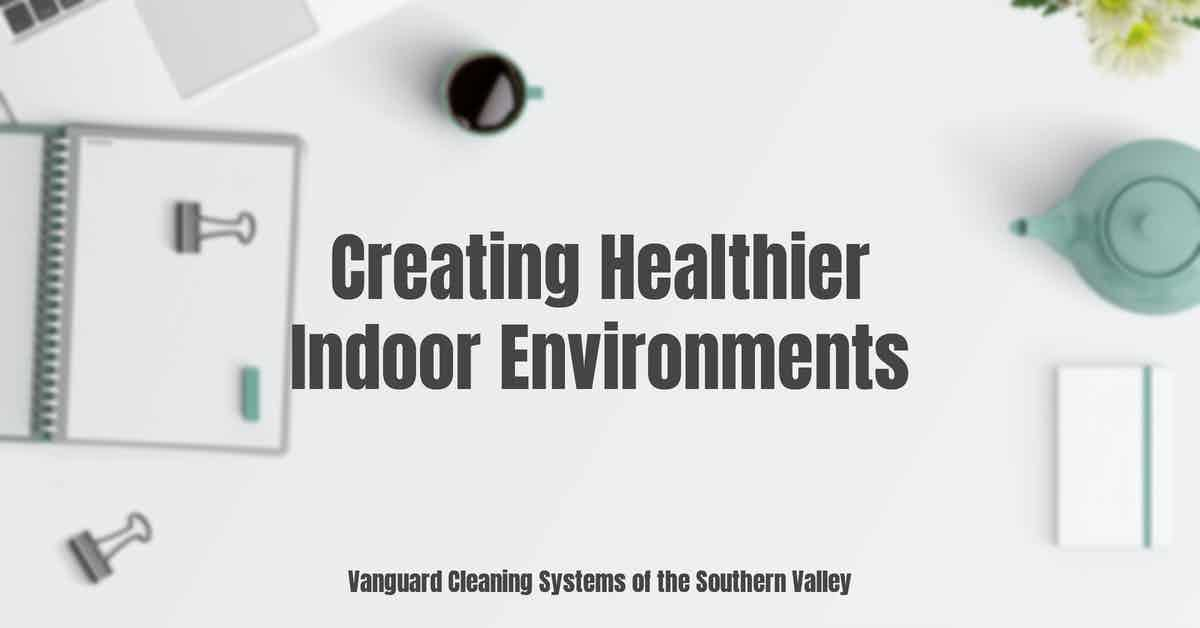Green cleaning practices complement sustainable business initiatives and lean operations while creating a healthier indoor environment proven to increase occupant production and creativity while reducing overhead and preventable costs.

The Need and Demand for Healthy Public Facilities
Green cleaning procedures and methods fill the increasing demand for healthy public facilities.
Indoor environments, where we spend most of our lives, correspond directly to numerous serious health issues that negatively impact occupant wellbeing, workforce productivity, and student attendance, among other things.
According to the U.S. Environmental Protection Agency (EPA);
The importance of the indoor environment to human health has been highlighted in numerous environmental risk reports, including the 1997 report of the President and Congressional Commission on Risk Assessment and Risk Management.
On average, we spend about 90 percent of our time indoors, where pollutant levels are often higher than those outside.
Indoor pollution is estimated to cause thousands of cancer deaths and hundreds of thousands of respiratory health problems each year.
In addition, hundreds of thousands of children have experienced elevated blood lead levels resulting from their exposure to indoor pollutants.
Healthy Buildings, Healthy People - A Vision for the 21st Century
Further, due largely to the ongoing pandemic, office workers, students, and consumers have become increasingly aware of how facility surface hygiene and air cleanliness impact their long and short-term health and wellness.
According to Facilities Net;
In addition to aesthetic impressions of the facility, issues related to sustainability and well-being have become increasingly important to corporate tenants as well as to employees.
Therefore, such issues also have become more important to facility managers; they are expected to have expertise on the more psychological as well as the practical aspects of the buildings they oversee.
Not surprisingly, heightened concerns about buildings’ health-related features in the wake of the worst pandemic in recent memory exist.
Naturally, people will be wary.
There also will be greater awareness that the maintenance of unseen systems such as ventilation and cleaning protocols could be just as vital for safety as, say, a leaking ceiling or a crack in a sidewalk.
Developing Green Sustainable Cleaning Practices to Meet Occupant Demand for Healthier Buildings
Depending on the design of your building, the demographics of your occupants, and the nature of your organization's business operations, implementing green cleaning services will range from relatively simple to exceedingly complex.
In general, the steps to follow consist of:
- Only using chemicals certified by a third party, such as the EPA's Safer Choice or the Environmental Working Groups EWG Verified program.
- Upgrade your cleaning tools and equipment, starting with microfiber brooms, mops, and towels, then progressing to chemical management systems, and finally to automated floor scrubbers, electrostatic disinfection appliances, and scrubber vacs that reduce the operational impact on natural resources while maximizing chemical-use efficiency.
- Implement waste diversion programs, commonly referred to as reduce, reuse, and recycling initiatives, to eliminate unnecessary natural resource waste and maximize product life cycles.
- Use high-performance entryway matting solutions to significantly reduce the amount of soil, dirt, germs, and bacteria brought into a facility on occupant shoes while simultaneously reducing the time and labor requirements needed to maintain the health and safety of your building and its occupants.
- Implement purchasing programs that focus on buying paper products for the restroom and breakrooms derived from 100% recycled materials and partner with vendors with published commitments to reducing environmental impacts.
- Conserve energy while addressing post-pandemic office workforce concerns by implementing day cleaning and day porter services to reduce after-hours energy consumption.
- Promote occupant wellness through hand hygiene initiatives that provide office workers and facility occupants with easy access to clean restrooms, soap, paper towels, and hand sanitizer, and;
- Publicly publish your organization's stated environmental stewardship targets and progress to promote positive community action.
Takeaway
Due to post-pandemic safety concerns, healthy facilities are in high and increasing demand.
Implementing green cleaning services independently or as part of a greater lean sustainable business plan is a proven method for reducing costs while increasing occupant creativity, satisfaction, productivity, and engagement.
Outsourcing is a proven method for rapidly onboarding critical and in-demand protocols, skills, and tools at a fraction of the cost of implementing comparable in-house systems.
If you would like more information regarding the effectiveness of high-performance infection prevention and control measures, or if you would like to schedule a free, no-obligation onsite assessment of your facility's custodial needs, contact us today for a free quote!
In Bakersfield, CA, call (661) 437-3253
In Fresno, CA, call (559) 206-1059
In Valencia CA, or Santa Clarita CA, call (661) 437-3253
In Palmdale, CA or Lancaster, CA, call (661) 371-4756

